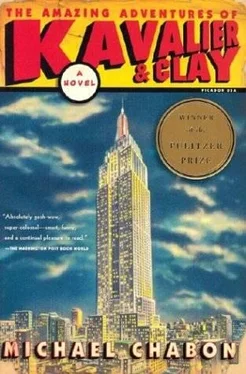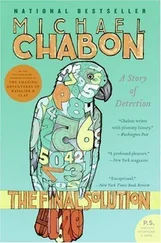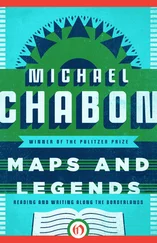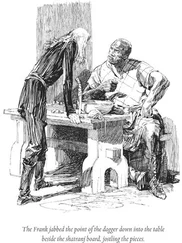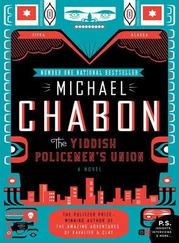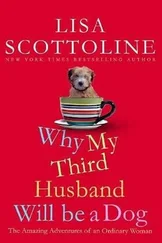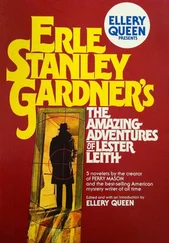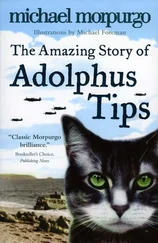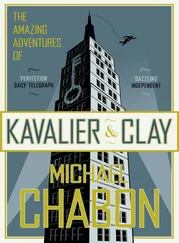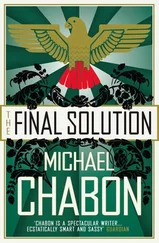It must be said at this point that a very large number of German New Yorkers were vehemently opposed to Hitler and the Nazis. They wrote outraged letters to the editors of the major dailies, condemning Allied and American inaction after the Anschluss and the annexation of the Sudetenland. They joined anti-fascist leagues, brawled with brown-shirts-Joe was far from the only young man who went out into the streets of New York that autumn spoiling for a fight-and vigorously supported the president and his policies when they took action against Hitler and his war. Nevertheless, there was a fair number of New York Germans who took open pride in the accomplishments, civil, cultural, sporting, and military, of the Third Reich. Among these was a smaller group that was regularly active in various patriotic, nationalistic, generally racist, and sometimes violent organizations sympathetic to the aims of the homeland. Joe frequently returned from Yorkville with anti-Jewish newspapers and tracts that he read through from front to back, stomach tight with fury, then stuffed into one of three peach crates that he used for a filing cabinet. (The other two held his letters from home and his comic books.)
One day, as he was haunting the streets of Yorkville, Joe noticed a sign painted in the window of a second-floor office: ARYAN-AMERICAN LEAGUE
Standing there, staring up at the window, Joe underwent a dark fantasy of running up to that office and bursting into that warren of snakes, feet flying right up at you out of the panel as jagged splinters of the door shot in all directions. He saw himself wading into a roiling tangle of brown-shirts, fists and boots and elbows, and finding, in that violent surf of men, triumph, or if not that then atonement, retribution, or deliverance. He watched the window for nearly half an hour, trying to catch a glimpse of an actual party member. No one entered the building or walked in front of the second-floor window. Joe soon gave up and went home.
Inevitably, he went back to Yorkville. There was a konditorei called Haussman's across the street from the headquarters of the AAL, and from a table by the window Joe had a good view of the door to the building's lobby and of the window. He ordered a slice of the house's excellent Sacher torte and a cup of coffee that was unusually drinkable for New York, and waited. Another slice and two cups later there was still no sign of any Aryan-American at work. He paid his tab and crossed the street. The building's directory, as he had already observed, listed an optometrist, an accountant, a publisher, and the AAL, but none of these concerns appeared to have any patients, clients, or employees. The building-it was called the Kuhn Building-was a graveyard. When he climbed the stairs to the second floor, the door to the AAL offices was locked. Gray daylight through the frosted glass of the door suggested that there were no lamps turned on inside. Joe tried the knob. Then he got down on one knee to examine the lock. It was a Chubb, old and solid, but if he'd had his tools, it would have presented no problem. Unfortunately, his picks and wrench were in a drawer beside his bed down at Palooka Studios. He felt around in his pockets and found a mechanical pencil whose metal pocket clip, attached to the shaft with a two-pronged collar, would serve well enough, suitably deformed, as a tension wrench. But there was still the matter of a pick. He went back downstairs and walked around the block until he found a child's bicycle chained to a window grate on East Eighty-eighth Street. It looked like a new bike, sugary red, its chrome parts bright as mirrors and its tires glossy and stubbled. He waited for a moment to make sure that no one was coming. Then he grasped the shiny handlebars and, with savage jabs of the heel of his shoe at the bike's front wheel, managed to spring loose a spoke. He wiggled it free of the wheel rim and then ran back to the corner of Eighty-seventh and York. Using an iron railing as a crimping form and the sidewalk itself as a rough file, he was able to fashion a serviceable pick from the thin strong wire of the spoke.
When he got back up to the offices of the Aryan-American League, he knocked on the scarred oak frame of the door. There was no reply. He hitched up his trousers, knelt down, put his forehead to the door, and set to work. The crude tools, lack of practice, and pulsation of his own excitement in his arteries and joints made the work more difficult than it ought to have been. He took off his jacket. He rolled up his sleeves. He tipped his hat into his hands and set it on the floor beside him. Finally he opened his collar and yanked his tie to one side. He cursed and sweated and listened so avidly for the sound of the door opening downstairs that he could not hear the lock through his fingers. It took him nearly an hour to get inside.
When he did, he found not the elaborate laboratory or manufactory of fascism he had been expecting but a wooden desk, a chair, a lamp, a typewriter, and a tall oak filing cabinet. The Venetian blinds were dusty and crooked, and missing slats. The wooden floor was bare and spotted with cigarette burns. The telephone, when Joe lifted the receiver, was dead. On one wall was a framed color lithograph of the Fuhrer in a romantic mood, chin held at a poetic angle, an alpine breeze stirring his dark forelock. Against another wall stood a shelf piled high with various publications, in English and in German, whose titles alluded to the aims and predictions of National Socialism and the pan-German dream.
Joe went over and stood behind the desk. He pulled out the chair and sat down. The blotter was lost amid a blizzard of notes and memoranda, some typed, some scrawled in a minute and angular hand.
hypnosis used on FT can prove it
FT and haschisshin old man of mountain further study
FT master swordsman
There were bus transfers, candy wrappers, a ticket stub from the Polo Grounds. There was a copy of a book called Thuggee. There were numerous newspaper clippings and articles that had been torn from Photoplay and Modern Screen. All of the magazine articles, Joe noticed, seemed to be concerned with the film star Franchot Tone. And larded throughout the layers of rubbish and cryptic notations were dozens of comic books: Superman, Marvel Mystery, Flash, Whiz, Shield-Wizard - as well as, Joe could hardly fail to notice, the latest issues of Radio, Triumph, and The Monitor. In spots, the drifts of paper grew positively mountainous. Paper clips, tacks, and pen nibs were scattered everywhere, like conventional features on a map. A jagged palisade of pencils bristled from an empty Savarin coffee can. Joe reached out and, with two quick sweeps of his arms, sent everything tumbling. The thumbtacks made a pattering sound as they hit the floor.
Joe went through the drawers. In one he found a statement from New York Telephone promising, reliably as it had turned out, to disconnect service if the AAL account continued unpaid; a typed manuscript; and, inexplicably, the menu from the recent wedding reception, at the Hotel Trevi, of Bruce and Marilyn Horowitz. Joe yanked out the drawer and tipped it over. The manuscript split into halves that sprawled like a dropped deck of cards. Joe picked up a page and read it. It appeared to be science fiction. Someone named Rex Mundy was taking aim with his ray pistol at the suppurating hide of a hideous Zid. Someone named Krystal DeHaven was dangling upside down from a chain above the yawning maw of a hungry tork.
He crumpled the page and resumed his raid on the desk drawers. One contained a framed photograph of Franchot Tone, in the lower left corner of which, tucked into the gap between the glass and the inner edge of the picture frame, was a panel that Joe recognized at once as having been cut from the pages of Radio Comics #1. It was a close-up shot of old Max Mayflower as a young man, rich and devil-may-care. His expression was dreamy, his cheeks were dimpled, and in the word balloon he was saying, "Oh, what do I care? The important thing is having fun." Joe noticed that the angle of Max's head, a certain wryness in his expression, and his chiseled nose were very similar, indeed identical, to those of Franchot Tone in the publicity photo. It was a resemblance that no one had ever noticed or remarked on before. Tone was not an actor whose work or face were especially familiar to Joe, but now, as he studied the slender, melancholy long face in the glossy photograph-it was signed To Carl with all the best wishes of Franchot Tone -he wondered if he could have unconsciously modeled the character on Tone.
Читать дальше
